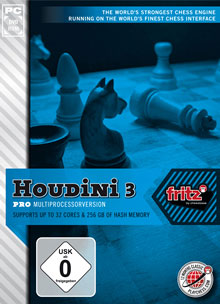
Oh, boy. I was reading a ChessBase article this morning, and
they said something I thought was fantastically asinine and mind-bogglingly
incorrect. I have been arguing about this exact thing for years now. Here is the quote, regarding the Houdini 3
engine that is now available commercially:
If you were going to consult someone on a chess
position, and had the choice between a grandmaster or the world champion,
wouldn’t you opt for the world champion even if the grandmaster already
provided an answer beyond your personal ability?
What? Why? That is ridiculous, in my opinion.
Claiming that only the world champion would be the best coach/advice giver is
completely off base. Miles and miles off base.
If I had a child who was just beginning to
swim, would I need to hire Michael Phelps for lessons? Anything else is second
best? Good grief, no. If I were starting to learn guitar, there would be many
teachers besides Eddie Van Halen himself that would suit me just fine.
It’s hype, folks. Most of the people who ask
what engine they need are at the beginner or low intermediate chess level, and
carry a rating somewhere between 1,100 and 1,600 Elo.
If we were to believe the article, then that
player would benefit more from what the world chess champion has to say about
their games as opposed to someone rated only a thousand or two above him. What
a crock. That’s a load if I’ve ever heard one.
Is the new Houdini engine strong and smooth?
Oh, I have no doubt. I just don’t happen to believe that, above the 3,000 Elo
level, 100 points here and there is worth the sixty bucks you have to shell out
vs. a free engine that’ll do the same thing for 99% of players out there.
Here is one thing I did like, though, being
an engine fan:
These databases are known as endgame tablebases, and
even just the sets with up to five pieces, take up about 7 GB. The Scorpio
bitbases do the exact same thing, with perfect knowledge, but take up about
300MB and can be stored in the RAM, making them far more compact and easy for
the engine to consult on the fly.
Okay, that’s pretty cool. That’s really cool,
in fact. I have been into chess engines since around 2004, and I have seen tons
of changes along the way. Back then, though, I would sign my engine on to a
playing server and get into battles with other engines.
Tweaking them was the name of the game, back
then. But they weren’t playing at the 3,300 level. I was screwing around with
fast and strong (for then) engines like Aristarch, Arasan, TheKing
(Chessmaster’s engine), Gandalf, Ruffian, and myriad others. This was all
before the introduction of engines like Rybka and Fruit, two strong engines
that pretty much wrecked the fun.
In short: Hey, if you want to shell out sixty
bucks so that you can say you have the strongest engine in the world, go for
it. Houdini is a very, very nice engine and it’ll never let you down. If,
however, you just need a grandmaster strength study partner, almost any free
engine will do just fine. Trust me on that.
If you are rated in the 1,000, 1,500 or even
1,900 range, the 2,700 rated engine is going to tell you the exact same thing
about your games that a 3,500 rated engine will.
Just sayin’.
Link to article: http://www.chessbase.com/newsdetail.asp?newsid=8633
Looking forward, as always, to your
comments.